|
Like many of us, one of the prayers I learned growing up was the prayer to St. Anthony – “St. Anthony, St. Anthony, please come around. Something is lost and must be found.” I put St. Anthony on the back shelf through my teenage years and into adulthood, but as I aged, I realized more and more that I need help and guidance to live a good and faithful life. One day, while I was traveling, I left an expensive set of headphones on a plane. I did not realize it until later in the day when I was checking my briefcase in preparation for a meeting. It would be days before I could return to the airport. I trusted those earphones into St. Anthony’s capable hands. Three days later, I arrived late to the airport, went to my gate, remembered my prayer to St. Anthony, had time to go to the lost and found, and there were my headphones. Since then, I have relied on St. Anthony numerous times to find my phone, keys, or that elusive book. I must confess, I am a bit shy sharing my emerging devotion to St. Anthony. It borders on superstition, no? Superstition is when I believe that what I do – say a prayer – causes St. Anthony to act. The saints contemplate God, praise him, and “constantly care for those whom they have left on earth.” (CCC 2683) Evoking St. Anthony does not change God. It changes me. The more I learn about St. Anthony (1195-1231), the more I want to know. He was born into wealth and privilege, joined the Augustinians at a young age and, at 19, was ordained and served as the guest master. That is how he met the Franciscans. He was drawn to their life of mission to the poor. He immersed himself in scripture and, just by happenstance, was discovered to be a remarkable preacher. Eventually, St. Francis (1181-1226) himself entrusted the formation of the Franciscans in theological studies to Anthony – balancing the rigors of the academy with the simplicity of the Franciscan life. After the general chapter in 1226, he was made Provincial Superior of northern Italy and settled in the city of Padua. In 1228 he served as the Franciscan envoy to Pope Gregory IX. His preaching was so amazing, he was commissioned to produce a collection of his homilies. There are many miracles attributed to St. Anthony. There are two that I find particularly compelling. Anthony had a book of psalms that was very important to him. He wrote notes in it to help him instruct his students. A novice, who decided to leave the order, took it. St. Anthony prayed for its return. Not only did the thief return the book, but he also returned to the community. The Eucharistic miracle attributed to St. Anthony occurred when he was challenged by a heretic about the real presence of Christ in the Eucharist. The heretic brought a hungry mule and showed him fresh fodder. St. Anthony brought a monstrance with the Blessed Sacrament. The mule ignored the fodder and bowed before the Blessed Sacrament. St. Anthony became ill with ergotism, a disease caused by a fungus found in rye and other cereals. He went to a woodland retreat to recover and died on his way back to Padua on June 13, 1231. More and more I am asking St. Anthony to “come around” to guide me in my own ministry within the church, my family life, and my daily life in these uncertain times. My prayer is that we will take the time to “come around” to St. Anthony and learn from this remarkable saint. He can guide us in rooting our lives in the scripture, cultivating a deep love for the Eucharist, and living a life spent in service to others. I will still ask St. Anthony to help me find my headphones – but I will also ask him to help me “hear” the word of God and act on it. **This photo is from: https://aleteia.org/2019/12/21/why-is-st-anthony-of-padua-depicted-holding-the-child-jesus**
0 Comments
Last year, I wrote a blog about my confirmation saint, Saint Felicity. I wrote how her life was inspirational towards my own life and how proud I was to have her as “my” saint. I really enjoyed the experience of learning more about “my” saint, and I thought it would only be fitting to continue on my self-discovery journey through the saints. This time, I set out to learn more about Saint Frances of Rome. When I was younger, I always disliked having to tell people my middle name. You see, my given name is Sarah Marie Frances (intentionally two middle names). I would always just tell people my middle name was Marie. In my naivety, I felt like Frances was a boy's name and just never found that it stuck; I swore to remove it once I turned eighteen. I knew that the name Frances was chosen for me after my Great Aunt, and I understood the sentimental reason as to why my parents chose my name, but it just didn’t feel “cool” to tell my peers that my middle name was Frances, so just Marie would have to suffice. As I’ve gotten older, I’m disappointed in my past self for believing this. I’m so honored to bear the name of my Aunty Frannie, as we called her. She passed away when I was around four, and I seldom have memories with her when she was alive, but I cherish the few that I did have. Since I was old enough to go on the internet, I would research various names and whether they had an impact on history (can you tell that I studied history in college?). I would search Sarah and read about her journey in the Old Testament, Marie is a diminutive of Mary, the Blessed Mother, and Frances is known as Saint Frances of Rome. Saint Frances of Rome was born in 1384 in the Papal States to a wealthy family. She was always interested in religious life, but was soon forced into an arranged marriage, yet she always yearned for a life of service and prayer. Together with her sister-in-law, Vannozza, she began to minister to the poor in Rome. After a few years, Frances lost her son and daughter to a plague that was sweeping across Italy. In an attempt to help the suffering, she donated all her money and possessions to those who were in need. Even after the plague had ceased, she continued her work for the poor and later founded a religious society for women with the goal to offer themselves to God and be of service to the poor. She continued her work for many years and, after the death of her husband, she moved into a home with the members of the society she created. Saint Frances really is an inspiration to us all! She serves as a reminder to help those who are in need, to prioritize our relationship with the Lord, and to persevere through the challenging moments in our lives. I am so honored to bear her name and I hope to use her story as a model for my own and to be more like her each and every day. To learn more about St. Frances of Rome, visit our feast day site. **This image is from https://www.franciscanmedia.org/saint-of-the-day/saint-frances-of-rome/**
Tomorrow, we celebrate the birthday of St. Vincent Pallotti, patron of the Catholic Apostolate Center and founder of the Union of Catholic Apostolate. St. Vincent Pallotti was born on April 21, 1795. How appropriate for the saint who lived and worked in the city of Rome to share his birthday with the traditional date for the founding of the city. To help celebrate his birthday, I have put together a list of some of his more interesting achievements and activities during his life. I hope that you too will be inspired by his life. 1) The Baptism of St. Vincent Pallotti St. Vincent Pallotti was baptized on April 22, 1795 in the St. Lawrence Church in Rome. This began his life in the church. 2) St. Vincent Pallotti on Holiday On his arrival in Frascati around 1805, St. Vincent Pallotti exchanged his new shoes for that of a poor boy. Giving away his new clothing to the poor would become a lifelong habit for the saint. 3) St. Vincent Pallotti Makes a Prediction While speaking with the young Giovanni Mastai-Ferretti in 1817, St. Vincent Pallotti predicted that he would one day be elected to the papacy. Mastai-Ferretti was elected Bishop of Rome on June 16, 1846. 4) St. Vincent Pallotti the Professor St. Vincent Pallotti was awarded two doctoral degrees in both theology and philosophy in 1814 and 1819. Teaching was one of the favorite activities of the saint. 5) St. Vincent Pallotti Showing Courage During the cholera epidemic of 1837, St. Vincent Pallotti organized a barefoot procession of religious. This action was penitential and showed that they were not afraid of the disease. 6) Catholic Apostolate Received Church Approval St. Vincent Pallotti received approval for the Catholic Apostolate from the Church in 1835. Pallotti also received support for the Catholic Apostolate from Pope Gregory XVI when others objected to it. 7) St. Vincent Pallotti the Chaplain Beginning in 1838, St. Vincent Pallotti served as a prison chaplain in Rome. He often worked with the condemned, saving many souls. He had a true willingness to serve all, especially the poor and the marginalized. 8) St. Vincent Pallotti the Peacekeeper St. Vincent Pallotti stopped a riot in the Trastevere neighborhood of Rome. He implored the people to stop rioting by showing them an image of Mary, Mother of Divine Love. 9) St. Vincent Pallotti Preaches one Last Time On the last day of the octave of the Epiphany in 1850, St. Vincent Pallotti gave his final sermon. 10) St. Vincent Pallotti Dies In 1850, St. Vincent Pallotti gave his final blessing to his followers. He showed great courage even in the face of death. There are many more stories about St. Vincent Pallotti that you may find interesting. Check out our St. Vincent Pallotti Portal to learn more about our patron and his many works. Imagine four graduate students passionate about ministry and ready for new experiences. We pulled up to a ranch house in New Hampshire in August 2012 and unloaded our packed cars. Our next two years were devoted to serving in local parishes while earning our degrees in theology through the Echo Graduate Service Program. Our first community prayer took place on the Feast of St. Bernard of Clairvaux, whose feast day we celebrate on Thursday. The translation for “Clairvaux” is “Valley of Light”; we didn’t know a great deal about Bernard, but the theme of light clicked. We were accumulating candles as welcome gifts from our parishes, so of course, it was a sign! We pieced together his biography and reflected on his dynamic writings. We asked St. Bernard to be the patron of our house and bless our time together. St. Bernard was a monk who lived in 11th century France and became a Doctor of the Church. From an early age, he was considered devout and well-educated. The third of seven children, Bernard took a particular interest in poetry and had a special devotion to Mary. He notably authored the Memorare prayer. He became a respected abbot of what are now the Cistercians in the Diocese of Langres. Bernard is credited with naming the monastery he began Claire Vallée, in an area originally named Vallée d'Absinthe, or Valley of Bitterness. He was known for his influence among clergy and political leaders. St. Bernard died in 1153 and was canonized in 1174. Now imagine a young family. My husband, one-year-old son, and I prepared to “hunker down” for quarantine in March 2020 in Indiana. Five months later, we are still amid a global pandemic that can feel overwhelming, oppressive, disheartening, and confusing all at once. The virus has also revealed some of the most beautiful elements of community and compassion. While I can’t compare the virus to the challenges Bernard faced as a young adult starting a monastery with a “band of monks,” I appreciate how he held fast to the deeper purpose of Benedictine life. He cultivated habits of work, leisure, and rest while counseling his fellow monks, clergy, and politicians. COVID-19 forced me to recognize how I create space to listen and be with God both inside and outside my home, much like Bernard’s contemplative life. Eight years ago, the patron of candlemakers introduced what it means to practice a type of “spirituality of home” where home is not only a place for living, but also one of brightness, hope, and intentionality. I can see hope daily in our little boy, doing the hokey pokey many times over, reading books, and playing chase. We intentionally set up a prayer table in our living room where we say morning and evening prayers as a family and filled walls with icons and pictures to remember who it is we say thank you to! These habits took time, but they have been a source of security in such a time of uncertainty. I’m grateful to St. Bernard for bringing light to all the “unknowns” in our little ranch house in New England and my first home in the Midwest. He is a guide who shows us how to cultivate habits that lead to a deeper relationship with God, our true home! Reflection Questions: How might we practice a “spirituality of home”? Where is the light in our individual “valleys of bitterness,” i.e. isolation, loss, anxiety, or despair? Inspiration for this article came from the book Theology of Home. If you enjoyed this post, we invite you to read Creating an Inner Monastery During the Coronavirus Pandemic.
When I was a senior in high school in the diocese of Joliet, then-Bishop Peter Sartain came to celebrate one of our monthly school Masses. I was asked to assist the Bishop for the day, and throughout the day he and I had many warm conversations. I received a piece of mail a few weeks later from Bishop (now Archbishop) Sartain containing a handwritten note and several prayer cards with Blessed Pier Giorgio Frassati’s image on them. Little did I know that the young Blessed would soon become one of my dear patron saints. In my opinion, anyone who offers their life as an apostle on mission—including lay and ordained ministers, Catholic school employees, catechists, and all spiritual guides—should keep Blessed Pier Giorgio Frassati as their patron saint and their example to combat despair and to joyfully share the Gospel. Blessed Pier Giorgio shows us the Christ-like demeanor and personality that the Church and her ministers and missionaries should possess as they evangelize the world. Blessed Pier Giorgio makes an excellent spiritual guide and mentor because he was an ordinary young man with a profound commitment to the poor and to justice. There are countless books and articles that describe how Pier Giorgio spent hours serving the poor and the homeless, often giving away the money he had for bus fare and even his own jacket! His parents misunderstood his great actions of charity, and often scolded him when he returned home late without his coat. He was never distracted from the missionary imperative of the Gospel. Instead, he served those on the margins as Jesus commanded. Archbishop Wilton Gregory of Washington D.C. recently stated in a webinar, “The Church lives in society. The Church does not live behind the four [walls] of the structures where we worship.” Just as Pier Giorgio Frassati befriended the poor and sought justice as a “man of the beatitudes,” we too must go beyond the four walls of our churches, homes, and offices into the margins of our society to serve our brothers and sisters and work for justice. Blessed Pier Giorgio also accompanied others in their pursuit of God. He maintained unlikely friendships and was neither bound up by cynicism nor weighed down by scandal. Instead, he actively worked against these in his interactions with all. Many stories detail his love for pranks, making bets with his friends over games and making the stakes be attending Mass or Adoration. Like this soon-to-be-saint, we must live in the world while encouraging others to return to Christ in the spirit of friendship. As apostles on mission, we must live, work, and play with a renewed spiritual vision, driven by the practice of spiritual accompaniment. The quality I most admire in Blessed Pier Giorgio is his ultimate trust in God’s plans. He did not try to take control of his life’s plan nor did he envy God’s authority. Rather, he allowed God to guide him as he discerned his future and his mission in life. Pier Giorgio brought Church doctrine to life through his service and actions. He lived with a gospel-inspired freedom. He spent time in deep prayer, contemplating the mission God had laid before him, discerning to serve the poor as a lay man with expertise in mechanical engineering rather than as a priest. Pier Giorgio trusted God. As Alfonso Nebreda, S.J. wrote, “We must not forget that man cannot nourish his spirituality with orthodoxy alone … there is more to Christianity than this … for faith is life” (Kerygma in Crisis?, Nebreda). Blessed Pier Giorgio embodied the Gospel, and he lived it out according to his mission from God. As we consider the life of Blessed Pier Giorgio Frassati, I invite those who serve the Church as lay or ordained ministers, catechists, educators, and spiritual guides to adopt this young saint as a guide for our spiritual lives and our ecclesial missions. Let us invite the same Spirit who lived in Blessed Pier Giorgio and who makes the Church vibrant to renew our hearts, minds, and missionary efforts. Blessed Pier Giorgio, pray for us! Interested in learning more about becoming an apostle on mission? Click here to learn more. Founded in the 17th Century, Saint Patrick’s Day is both a commemoration of Ireland’s patron saint as well as a popular celebration of Irish culture enjoyed worldwide by the Irish and the Irish-at-heart. Folks wear green, host parties and parades, and enjoy Irish food, drink, and dancing. While the holiday holds special significance for Irish-Americans (who represent the largest chunk of the global Irish diaspora), Saint Patrick’s Day is a feast that all are invited to share in. The lasting, inclusive nature of this holiday has much to do with the Irish people, their fight for freedom, and their collective experience as immigrants in America. Fittingly, Ireland’s patron saint was himself an immigrant to Ireland from his native Roman-British shores. We celebrate Patrick today because he successfully spread Christianity across 5th century Ireland – a mission that forever altered the destiny of the Irish people. Patrick is beloved for preaching in the Gaelic language, for using natural imagery to illustrate Gospel truths, and for driving away superstitious pagan beliefs. Like many early saints, Patrick’s story is a mixture of legend and fact. However, beyond the colorful lore stands a real person whose deeds and words continue to inspire and affect us. To help you better know the man behind the myth, here are ten fascinating facts about Ireland’s very first bishop: 1. Patrick was not born Irish. While he spent the majority of his life living among and ministering to the Irish people, Patrick was a Roman Briton by birth. His exact birthdate and birthplace are uncertain, but it is believed he was born in Scotland, England, or in northern Wales around 386 A.D. 2. Patrick first came to Ireland as the captive of Irish pirates. Patrick was a teenager when he and “a large number of his father’s slaves” were stolen and sold into slavery by Irish raiders. This began a six-year stay of captivity in Ireland, during which Patrick’s spiritual conversion began while he labored as a shepherd. 3. Patrick escaped slavery with help from a dream. After years of suffering and intense prayer, a voice in his dream said, “You have fasted well. Very soon you will return to your native country” [Confessio, 17]. The voice then told him where he would find a ship, some two hundred miles away, to carry him home to Britain and his family. 4. Patrick spent time studying for the priesthood in France. After his return to the Britons, Patrick travelled and continued his studies in Christianity at Auxere, France (formerly Gaul), possibly visiting Marmoutier Abbey in Tours, before being ordained. 5. Patrick received a vision calling him back to Ireland. After his parents begged him to cease his adventures, Patrick received another dream in which a man approached him carrying letters from the Irish people and imploring his return. Fr. Jack Wintz, OFM says, “What is interesting about this dream… is that it came not as a directive from God, but as a plea from the Irish…. Patrick wasn't commanded to bring civilization or salvation to the heathens. He was invited to live among them as Christ's witness.” 6. Patrick’s Irish mission was unpopular. Few of Patrick’s brother clergy shared his sympathy for the Irish people, who were viewed as barbaric and hostile. Patrick’s superiors disapproved of his calling; his Confessio (first-person account of his life) was written partially as a defense and a response to critics of his mission. 7. Patrick wasn’t the first Christian missionary to Ireland. Fr. Jack explains, “There were some Irish Christians, mostly on the eastern and southeastern coast. Many of these were probably British slaves who had been taken into captivity by the Irish. There is a record of a Bishop Palladius being sent to Ireland before Patrick. But the mission of Patrick was unique.” 8. Patrick taught the Gospel through Celtic language and symbolism. Patrick preached effectively in the Gaelic tongue, and he employed pre-existing pagan symbols in transmitting the faith. While Patrick’s use of the three-leaf clover to illustrate the Trinity was likely a later addition to his legend, Patrick’s Confessio specifically details his distinctions between Irish pagan sun worship and Christian worship – including Old Latin wordplay of the words sun and Son. Irish priest Fr. Liam Lawton notes, “the Celtic cross we know today was basically a cross superimposed on the sun… Patrick convert[ed] sun worship to Son worship.” 9. Patrick drove out superstitious practices, rather than snakes. Patrick is said to have driven out “all the snakes of Ireland” into the sea. While the National Museum of Ireland’s fossil collections and records provide no evidence for snake species ever having existed in Ireland, Patrick likely did the Irish a greater service through his concrete and traceable efforts to build churches and ordain Irish priests—efforts which helped to drive out the druids who had formerly dominated Irish spiritual affairs. 10. Patrick wasn’t always associated with the color green. Jumping forward in time – Saint Patrick’s Day celebrations first bloomed in America in the early 1700s, where the Irish diaspora developed them into the holiday we recognize today. However, says NYU professor Marion Casey, “It wasn’t until 1798, the year of the Irish Rebellion, that the color green became officially associated with the day.” Before then, “The color associated with St. Patrick was blue, as it was featured both in the royal court and on ancient Irish flags. But as the British wore red, the Irish chose to wear green, and they sang the song ‘The Wearing of the Green’ during the rebellion, cementing the color’s relevance in Irish history.” Wishing you a blessed and fun Saint Patrick’s Day – Sláinte (Health)! “Who did you pick as your confirmation Saint?”
“St. Vincent!” “Oh cool, St. Vincent DePaul, that’s great!” No…not him…St. Vincent Pallotti…” “Who is that?” The name game for saints with common names is a frequent and sometimes frustrating occurrence, as is often the case with St. Vincent Pallotti—my patron, confirmation saint, and friend. Pallotti was many things: the friend of popes and cardinals, confessor of many of the religious in Rome at the various colleges, and great supporter of the laity. Throughout his 55 years of life, Pallotti did everything for the infinite glory of God (infinitam Dei gloriam). His life, message, and charism were life-giving and meaningful while he was alive, as well as today. Many saints can seem out of our reach—St. Joseph of Cupertino is known for flying and St. Padre Pio of Pietrelcina received the stigmata. While there are accounts of St. Vincent Pallotti levitating and bilocating, his life and legacy are not marked solely by these acts of mysticism. One of the main reasons that Pallotti’s example resonates so deeply with me in 2020—170 years after his death—is because of how humble and “normal” his life was. Now, “normal” is quite relative, but in comparison to many well-known saints, Pallotti’s life was normal, even boring. Pallotti’s parents were devout and his love for Christ and the Church was evident from a young age. There are many stories of St. Vincent’s great care for the poor, including a story of him giving away his bed to a beggar. St. Vincent was not a particularly good student as a young boy, and it was not until his mother prayed a novena to the Holy Spirit for his education that Pallotti became a model student. As a priest of the Diocese of Rome, Pallotti spent much of his time hearing confessions. After a cholera epidemic struck Rome in the mid-1800s, Pallotti founded a home for orphaned girls. He set up night schools so that working men could receive an education. He was also a mathematician. In fact, it was in his study of calculus that he came to understand God as Infinite Love. There was no deed too small, no task unworthy of his effort. To the 2020 Catholic Church in the United States, Pallotti’s great interest in collaboration with and co-responsibility of the laity might not seem outrageous, but in the 1830s and 1840s in Rome, it was. Many of Pallotti’s closest collaborators were lay people, one of whom was Blessed Elisabetta Sanna. He also made sure that the various ministries and apostolates that he established involved the laity not just as pawns or placeholders, but as central actors in the life of the Church. St. Vincent Pallotti can teach us so much. He struggled greatly with anger and pride; in this we learn that we are not alone in our personal struggles. He lost many of his siblings when he was young; in this we learn that we are not alone in our loss. He turned people’s attention to God when he distributed pamphlets during the Roman carnival, or when he would drop a reliquary from his sleeve so that the Romans who would come to kiss his hand (as was customary to do to priests at the time) would kiss it instead of him. In this, we learn that we too can persevere when the world around us tells us things that are contrary to what we believe. I learn from St. Vincent Pallotti every day. He is a model for me in perseverance, humility, and devotion to God. When I sin and fall, I remember his personal reminder that he was but “nothingness and sin.” When I look at the apostolic works that I take part in, the ones that are looked down upon or seen as unrealistic, I think back upon Pallotti and the same judgements that many must have made about him. The greatest influence that St. Vincent Pallotti has had on me is the image of God as Infinite Love—that Infinite Love can love me at my best and my worst. The Infinite Love of God is what balances the scale with sin on one side and being the beloved of God on the other; it reminds us who God is in his greatest depth. My life and my faith have been so greatly touched by St. Vincent Pallotti and I am deeply thankful for him. May he continue to intercede for us all and may we, as we undergo our apostolic works, look to him as a mentor, a guide, and a dear friend. St. Vincent Pallotti, pray for us. To learn more about St. Vincent Pallotti, please click here. When I was younger, one of my favorite things to do was to read about the lives of the saints. My family had tons of little books geared towards children with a one-page summary of the saint’s life, what they are patron of, and a little prayer to them. For me, it was fascinating to see the many different paths to holiness that God has given us as examples to follow. There is no one way to live out a life centered on Christ. Saint Bridget of Sweden is one of these saints whom I find fascinating. She lived in Sweden in the 14th century, was born into a wealthy family, and was a daughter of a governor. She was married at age 14 and gave birth to eight children (Fun fact: one of her daughters is a saint as well – St. Catherine of Sweden!) After the death of her husband, Bridget set out to begin a religious community, which is now known as the Order of the Most Holy Savior, or the Brigittines. The order was eventually confirmed by Pope Urban V, after the papacy made its return to Rome. St. Bridget was a mystic, having her first vision, at age ten, of our Lord hanging on the cross. She continued to have visions throughout her life, including ones of Purgatory. In one of her visions, St. Bridget asked Jesus how many blows he suffered, to which he responded, “I received 5480 blows upon My Body. If you wish to honor them in some way, recite fifteen Our Fathers and fifteen Hail Mary’s with the following Prayers, which I Myself shall teach you, for an entire year. When the year is finished, you will have honored each of My Wounds.” These prayers, also known as the “Fifteen O’s,” became widely recited during the Middle Ages, promising indulgences as well as the release of souls from Purgatory among other graces. St. Bridget died at the age of 69 and was canonized just 19 years after her death by Pope Boniface IX. She is co-patroness of Europe, along with St. Catherine of Siena and St. Teresa of the Cross. It is so rare and beautiful to be able to look to a saint who was a wife, mother, and religious sister. Regardless of her state in life, St. Bridget kept her eyes fixed on Christ crucified, and lived her vocation for Him. “O Lord, make haste and illumine the night. Say to my soul that nothing happens without You permitting it, and that nothing of what You permit is without comfort. O Jesus, Son of God, You Who were silent in the presence of Your accusers, restrain my tongue until I find what I should say and how to say it. Show me the way and make me ready to follow it. It is dangerous to delay, yet perilous to go forward. Answer my petition and show me the way. As the wounded go to the doctor in search of aid, so do I come to You. O Lord, give Your peace to my heart. Amen.” – St. Bridget of Sweden Today is the feast day of St. Camillus de Lellis. St. Camillus de Lellis was an Italian saint who suffered much from a young age. His mother died during his infancy and he was ignored by his father during his upbringing. Throughout Camillus’ life, he also suffered from a leg sore that he developed at age 17. Camillus served as a soldier and had a violent gambling addiction. By the time he was 24, he had gambled and lost everything he owned—down to the shirt on his back. After having a conversion while staying at a friary of Capuchins, Camillus attempted to join the order multiple times, but was denied due to his leg sore. He spent much of his life in the San Giacomo Hospital for the Incurables caring for the sick and suffering. After receiving advice from his spiritual director, St. Philip Neri, Camillus studied for the priesthood and was ordained a priest at the age of 34. Camillus’ dedication to caring for the sick drove him to begin his own congregation dedicated to serving the sick in hospitals, those inflicted by the plague, and men injured in war. His order came to be known as the Order of the Ministers of the Sick, or simply as the “Camillians.” He is quoted as saying, "If no poor could be found in the world, men ought to go in search of them, and dig them up from underground to do them good, and to be merciful to them." Camillus spent his years in service to others, despite his own physical sickness, and died serving the sick. Camillus is the patron saint of nurses, those who are ill, and those with gambling addiction. I heard on a Catholic podcast that the beauty of saints is that when we ask for their intercession, when we ask them to pray for us, we are asking them to do the praying for us, to pray on our behalf. In a world filled with sickness and suffering, St. Camillus is a saint who can pray for us. Today on Camillus’ feast day, how can you ask for his prayers? Do you have a family member who is struggling with addiction? St. Camillus, pray for us. Are you or a family member suffering from sickness? St. Camillus, pray for us. Do you need hope and inspiration in your ministry? St. Camillus, pray for us. For the average modern-day Catholic, one’s familiarity with St. Barnabas probably extends as far as knowing that he was a companion of St. Paul during Paul’s early missionary work. But when I delved deeper into the Acts of the Apostles to learn more about Barnabas, I was surprised to see just how influential he was in the early days of the Church.
He first appears in the Acts of the Apostles 4:36: “Joseph, also named by the apostles Barnabas” sells a piece of his property and donates the money for the Apostles to use. He next appears in Chapter 9, when he takes charge of the newly-converted Paul and introduces him to the twelve Apostles, and later, he brings Paul into the missionary work for the growing, Jewish-and-Gentile-based Christian community at Antioch (in modern-day Turkey). Chapters 13 and 14 could be appropriately nicknamed “The Adventures of Paul & Barnabas,” for they include: an encounter with a false prophet (Acts 13:6-12), having their teachings embraced by Gentiles and just as thoroughly rejected by Jews (Acts 13:44-52), one near-stoning and one nearly-fatal stoning (Acts 14:5-6 and 14:19-20, respectively), and performing a miracle only to be mistaken for incarnations of the Greek gods Zeus and Hermes (Acts 14:8-14). And yet, the Holy Spirit compelled them onward! The next chapters recount more of Sts. Paul and Barnabas’s evangelizing work together and then focus on St. Paul after he and Barnabas went separate ways. Personally, I had never known that St. Barnabas—whom I had often envisioned as a sort of sidekick to St. Paul’s evangelizing heroics during his early years as a missionary—was actually the man indirectly responsible for Paul’s later renown. It can be difficult to believe that someone has truly changed, and even more difficult to advocate publicly for that person before he has had a chance to ‘prove himself’—and yet that is what Barnabas did. Would Paul ever have been accepted as a ‘true’ Christian if the well-regarded Barnabas had not been there to acknowledge Paul publicly and to put him in touch with the Apostles? How long might it have taken Paul to reach the path of the missionary if Barnabas had not sought him out specifically to assist the efforts in Antioch? In our modern, post-Christian society, there are many opportunities for us to be the Barnabas to someone else’s Paul. Perhaps it might mean asking for help from someone with a task that could ignite their zeal for the Lord and nurture their God-given talents. Perhaps we can see the potential for someone else’s faith to deepen and for the great things they could accomplish. Or perhaps the opportunities we encounter are chances to be a witness to the truth—even if that witness brings persecution, falls on deaf ears, or we must move on to other places, as Paul and Barnabas did. As we commemorate the feast of St. Barnabas, let us ask for his intercession in revealing to us how we can most effectively share the Gospel today and invite others into a life of meaningful discipleship. Question for Reflection: Has anyone ever advocated for you or have you ever been an advocate on someone’s behalf? What was this experience like? experience like? Two forces have particularly influenced my life. The first is my Catholic faith – given by my parents and nurtured by others as I grew. The second is my adulthood experience with obsessive-compulsive disorder (OCD). In wrestling with both of these forces (at times feeling like Jacob, who wrestled with God), I accidentally discovered a saint whose experiences reflected my own. Saint Dymphna lived in Ireland during the seventh century, after the time of Saint Patrick, Saint Brigid, and Saint Columba. Christianity was practiced by many – including Dymphna’s mother, who had her daughter secretly baptized. Dymphna’s father was a pagan king named Damon. Dymphna’s mother died when Dymphna was just 15 – throwing her father into a terrible grief. Damon’s counselors advised him to remarry, and though they searched for another wife, they found none. They then advised Damon to marry his daughter, who reflected her mother’s great beauty. Initially repelled, Damon eventually agreed and proposed to his daughter. Under the guidance of her confessor priest, Saint Gerebran, Dymphna rejected her father’s proposal, and fled Ireland for Belgium. Tradition states that Dymphna then built a hospice in Geel for the sick and the poor, where she remained for some time. Soon, Damon and his men traced Dymphna’s journey, and ascertained her whereabouts due to Dymphna’s use of foreign currency. Confronted by the mad king, Saint Gerebran rebuked his behavior, and Damon had his men kill the priest. Still hoping to win his daughter, Damon then pleaded kindly, offering wealth, prestige, and honor. Dymphna, steadfast in her vow of chastity, rejected the offer – and by her own father’s sword was beheaded. Soon after Dymphna’s martyrdom, several “lunatics” spent the night in the countryside where Dymphna died, and woke up in the morning healed. This miraculous place became known throughout Europe: a church was eventually built in the 1300s, with a sanctuary expansion built to accommodate pilgrims seeking mental relief. Townspeople themselves even began taking them into their homes, a tradition that continues to this day. Saint Dymphna entered my own life in a chance way seven years ago, near the onset of my OCD symptoms – which involved uncontrollable obsessions and time-consuming “checking” behaviors. Around this time, I discovered in my bedroom a prayer coin invoking Saint Dymphna. I do not recall where this coin came from – and I certainly had never heard of Dymphna before. But the prayer on the back captured me: “Oh St. Dymphna, Patroness of nervous and mental illnesses, grant that, through prayer, I may be pure in mind and soul.” Fascinated by her story and her Irish identity, I began to read, learn, and ask in prayer for her help. This relationship deepened and developed into my own pilgrimage to St. Dymphna’s church in Geel – which was closed when I reached Belgium! Nevertheless, she has continued to inspire my journey from OCD sufferer to OCD advocate, and I am more convinced than ever that she is a great intercessor and resource in our current Age of Anxiety. Below are some brief meditations on Dymphna’s continued influence on my life: 1. Dymphna kept faith even in grief. We all know how grief challenges our faith. Not only did Dymphna lose her mother, but she also had to tread the impossible tightrope of consoling her father while recognizing that his sickness was warping him. This must have torn at Dymphna’s heart. Yet even amidst suffering, she did not stop hoping in God’s providence. In my own life, losing my brother six years ago in an accident severely challenged my faith in God. During this time, I believe Saint Dymphna’s help guided me back to a place of trust and hope. 2. Dymphna chose the path of unknowing and vulnerability. By fleeing to Geel, Dymphna took a major-league risk and rejected the familiarity of her native land. Yes, she was momentarily safe from the king – but incredibly vulnerable as a foreigner and refugee. In many ways, staying home and appeasing her father would have been the “safe” choice. OCD constantly tempts me with gaining “safety” at the cost of doing ridiculous compulsions. While it’s terrifying to reject what OCD wants me to do (“Think hard enough and you’ll have peace!”), I have to respond by saying, “I’m willing to be anxious and unknowing, so I can live a real life.” That Dymphna, Patroness of mental illness, was beheaded, indicates to me that I must abandon relying on my brain, and embrace God and that which I cannot see or “figure out.” 3. Dymphna perfected her own authority and freedom to choose. In standing up to Damon, Dymphna inspires all of us who face temptation and all who face oppression from those who misuse their power. Not only did Dymphna preserve her vows of chastity, but she also avoided another, potentially graver misstep – the acceptance of a false crown, that is, her mother’s rightful crown. The choice to be independent is terrifying. The story of Dymphna, however, shows true independence is possible, through faith in God who desires our freedom from sin and from oppression. With God’s help we may learn to abandon the perceived “safety” of acquiescing to the soul-stealing machinations of tyrants (even the tyrants in your own mind), at which time the opportunity for freedom, originality, generosity, charity, and creativity arises. Questions for Reflection: What false crowns have you been offered in your life? What powerful proposals have been extended at the cost of your authority and freedom to choose? St. Joseph was a man for the ages. I like to think of Joseph as a man that walked the walk and only talked if it was necessary. I imagine that he went about his life quietly and out of the spotlight, worked hard in his carpentry, and spent time with his family in Nazareth. Imagining Joseph living today, I have similar imagery: he works for his father’s woodworking business, devotes time in his day for quality family time, and volunteers on weekends. I can picture the same figure then and now. Can you?
St. Joseph’s March 19th Solemnity celebrates faith, fatherhood, and fortitude in a way that brings people together. St. Joseph is the patron saint of the Universal Church, fathers, families, expectant mothers, travelers, immigrants, craftsmen, and many more! People all around the world look to Joseph as a model for their lives because of his deep faith, warm fatherhood, and fortitude. His deep faith evidenced in his “Yes” to marry the Virgin Mother. As we read in the Gospel of Matthew (Mt 1:18-19), Joseph was a kindhearted man who loved Mary so much that he was willing to risk his reputation. He was ready to stick by her through the betrothal and pregnancy and figure it out later, as we might say today. Matthew’s phrase is “divorce her quietly.” Scripture also tells us that God sent his angel in a dream to straighten things out with Joseph: “Joseph son of David, do not be afraid to take Mary home as your wife, because what is conceived in her is from the Holy Spirit. She will give birth to a son, and you are to give him the name Jesus, because he will save his people from their sins.” Certainly, only a man of true faith would hear these words and trust in God’s plan. His protection of the Holy Family and warmth while raising Jesus as his own. Although there is little written about Jesus’ life as a boy before his ministry, we can be sure that Joseph took great care of the Son entrusted to his care. Even when Jesus was a baby, Joseph protected him from death (Mt 2:19-23), presented Jesus at the Temple as was customary (Luke 2:22), and taught him his carpentry trade. This real-life example of fatherhood is one that lends its patronage to all fathers today. In my experience, my dad modeled the fatherhood of St. Joseph when he taught me that working hard in the service of others is one of our greatest duties on Earth. My dad also taught me perseverance. And finally, my dad taught me about optimism—an outlook on life that is forever reaching toward hope and success. Fathers have a model to emulate in St. Joseph’s quiet support and care for his family. His fortitude to face the world in times of adversity. At important times in Joseph’s life, he was challenged by God. In those moments, he rose to the challenge by making a selfless choice. In our lives as Catholics, we are often challenged at times of weakness or when life seems hard. Negativity can seem endless, problems pile on top of other problems, media stories show no hope, and family life is full of brokenness. When we are faced with these challenges, it is important to remember our forefathers in faith. We, like St. Joseph, must put our trust in God and entrust to him our lives and those of our loved-ones as well. The tumultuous world we live in will never have hope if we as Catholics are not the first ones to share God’s love. St Joseph is the perfect model of faith, fatherhood, and fortitude that we need in today’s world. Here is a short prayer to St. Joseph for his intercession. Pray this and feel God lift away your fears and despair. Oh St. Joseph whose protection is so great, so strong, so prompt before the throne of God, I place in you all my interests and desires. Oh St. Joseph do assist me by your powerful intercession and obtain for me from your divine son all spiritual blessings through Jesus Christ, our Lord; so that having engaged here below your heavenly power I may offer my thanksgiving and homage to the most loving of fathers. Oh St. Joseph, I never weary contemplating you and Jesus asleep in your arms. I dare not approach while he reposes near your heart. Press him in my name and kiss his fine head for me, and ask him to return the kiss when I draw my dying breath. St. Joseph, patron of departing souls, pray for us. Amen. 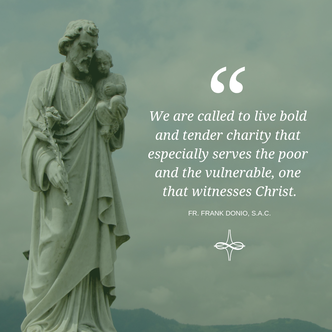 March 19th marks the Solemnity of St. Joseph, Spouse of the Blessed Virgin Mary and Patron of the Universal Church. These are rather lofty titles. He has many others. I first came to know St. Joseph, not only through the Nativity story, but because he was the patron of my parish church in Hammonton, New Jersey. As a child, I would look at the statue of St. Joseph to the right of the main altar and saw a wise looking, older person holding the child Jesus. His face was kind and tender, yet strong. Only later did I admire the work of the artist who was able to capture the essence of St. Joseph. Pope Francis, whose sixth anniversary of the inauguration of his ministry as pope is also on March 19th, reflected on these and other aspects of St. Joseph and what they mean for us: “In the Gospels, Saint Joseph appears as a strong and courageous man, a working man, yet in his heart we see great tenderness, which is not the virtue of the weak but rather a sign of strength of spirit and a capacity for concern, for compassion, for genuine openness to others, for love. We must not be afraid of goodness, of tenderness!” (Pope Francis, Homily, March 19, 2013) Charity or love, St. Thomas Aquinas tells us is “to will the good of the other.” (CCC, 1766). Goodness is not simply about being polite. It is much more than that. It is an opportunity to live love of neighbor in a way that is strong and bold at times. It is a way of showing love of God. Consider what St. Joseph did for Mary in taking her into his home (Mt. 1:24) or in moving the family to Egypt at a moment’s notice (Mt. 2:14). These were in response to God’s invitation to do so – an invitation that came in dreams. We are called to live bold and tender charity that especially serves the poor and the vulnerable, one that witnesses Christ. This is at the heart of the Lenten practice of almsgiving. It is this type of charity that “urges us on” as St. Paul tell us (2 Cor. 5:14). Pope Francis witnesses it, St. Vincent Pallotti lived it, and we are all called to do the same. May the Charity of Christ urge us on! For the past five years, I have had the privilege of working full-time in high school ministry. I often hear people say, “That’s so great that you are working with the future of the Church”. For the longest time, this statement didn’t sit well with me. I recently figured out why: young people are not the future of the Church, they are the Church. I have learned during this privileged time of ministry that there is great HOPE and JOY to be found in the young Church today. St. John Bosco is the patron saint of youth - and for good reason! At the centenary of his death, John Paul II named him “Father and Teacher of Youth”. At one point during his ministry, St. John Bosco ran a home which housed over eight hundred young men and he worked tirelessly to promote their dignity. His love for the Eucharist and steadfast promotion of the mercy of Jesus serve as examples for all of us working in ministry. I’ve received a glimpse over these last several years of what St. John Bosco tells us with his life: there is great hope and joy to be found in following Jesus and in sharing that joy with others. The “Father and Teacher of Youth” is famous for saying, Servite Domino in laetitia!, which is Latin for “Serve the Lord joyfully”. In any of our apostolic endeavors, it is crucial that we lead with joy. With everything going on in our world and Church, it can be all too easy to fall into despair - to question or wonder where God is. In the young people I have the privilege of working with, I have seen God’s hand everywhere. I have seen His hand in the ways that they encounter the heart of God for the first time; I have seen it when they grow in communion with each other; and I have seen it when they choose hope over the lies of this world. It is our great privilege to not only share the hope that is to be found in living for Christ— whether in the young Church or elsewhere—but also our responsibility to proclaim the joy of the Gospel. I am grateful for all that the young people I work with have taught me and count myself as privileged to learn what it means to live a life filled with Christian hope and joy. St. John Bosco, pray for us! **At the closing Mass of World Youth Day in Panama, Pope Francis also discussed the role of the young Church and their mission "now." “Not tomorrow but now”, he said. “Realize that you have a mission and fall in love”, Click here to continue reading. For more resources to learn about World Youth Day, please click here. The word vocation comes from the Latin “vocare,” which means to be called. Like any call, we are offered a choice to answer or ignore it. Assisting others in discerning their apostolic vocation in life was an important aspect of the ministry of the Catholic Apostolate Center’s patron, St. Vincent Pallotti. Pallotti had a great belief in apostleship and what the Church today refers to as the “universal call to holiness.” Many years before the Second Vatican Council formally addressed the role of the laity in the Church, Pallotti understood deeply that each member of the Body of Christ plays a significant role in evangelization. This included the active participation of the laity in collaboration with priests and religious. As the Union of the Catholic Apostolate stated in a 2012 reflection, “Saint Vincent Pallotti was the first to show that the laity on their part share different talents and vocations, possess hidden treasures, and should be employed in the work of evangelization, of edification and of sanctification.” All of this work comprises our vocation, and is what I’m referring to when I speak of our vocation with a little “v.” Before we can begin to think about whether God is calling us to religious life, marriage, or the celibate single life (known as our Vocations with a capital “v”), we must first look to live out the calling he gives all of us: holiness. I was raised outside of the Church. As a result, I wasn’t exposed to our beautiful faith (outside of my baptism) until high school. It wasn’t until three years into my high school career that I began to see religion, which had forever been just a class to me, as being something worth pursuing. Yet in high school, I more deeply came to understand Jesus’ words in Mark 2:17, “It is not those who are healthy who need a physician, but those who are sick; I did not come to call the righteous, but sinners." A life of apostleship, which will lead to the better discernment of our Vocation, is not one of perfection, but of accompaniment and relationship building. We accompany others as they live out their vocation. Similarly, we are accompanied, which helps us keep going when we fall. Our vocation is not something that we choose when to live out, but rather it is an essential and fundamental part of our lives as Christians. As baptized members of the faithful, we are called to live out our baptismal offices of priest, prophet, and king. To live out this call to holiness we must begin with prayer. Prayer, as St. Vincent Pallotti said, “consists in directing all one’s thoughts, words, and actions on God.” In fact, we should pray so much that we “pray without ceasing.” That means that we are living lives that are so full of God, so full of doing his will, that all of our actions, words, and thoughts become a prayer. It can be helpful to remember that prayer is a dialogue. Sometimes we talk and other times we are silent, waiting to hear the voice of God in whichever ways he decides to speak to us. Secondly, we live out our vocations of holiness by living a life of doing good and avoiding evil. This comes from practicing charity with our neighbors and with ourselves and from opening our hearts to those around us who Pope Francis would say are “at the margins.” Through the living out of our vocation, we help others to encounter Christ. This encounter is at the heart of our faith. As Pope Benedict XVI said, “Being Christian is not the result of an ethical choice or a lofty idea, but the encounter with an event, a person, which gives life a new horizon and a decisive direction.” Lastly, we must take part in the sacraments. God’s plan for our salvation is rooted in Christ, whose grace is poured out in all of the sacraments. We should receive the Eucharist, spend time in Adoration, and frequently receive his mercy in the Sacrament of Reconciliation. We have been given all of the tools necessary for living lives of holiness. Those tools are strengthened when we receive the sacraments. So how does living out holiness, our lowercase vocation, pertain to our Vocation? I would argue that living out our Vocation, the call to religious life, priesthood, marriage, or the celibate single life, is one of the highest achievements of living out our vocation. A marriage cannot thrive, for example, without love, hope, mercy, prayer, and kindness. Neither would the ministry of a priest or religious sister. When we truly see the beauty of the promises of Christ: salvation, freedom, mercy, and redemption, we naturally want to know how best to achieve and share them with others. When we understand our call to holiness, and live out our vocations, uppercase and lowercase “v,” then we will help to become saints and build the Kingdom of God. For more resources on Vocational Discernment, please click here. |
Details
Archives
July 2024
Categories
All
|
About |
Media |
© COPYRIGHT 2024 | ALL RIGHTS RESERVED



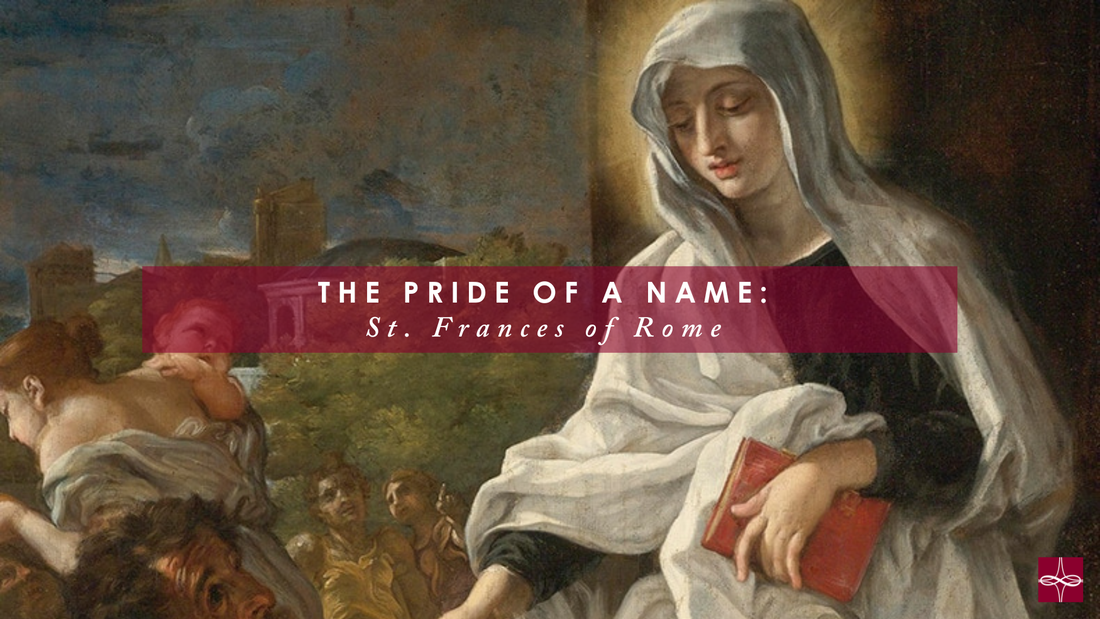

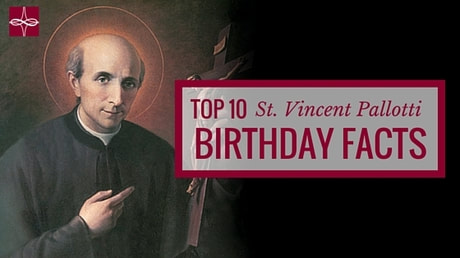
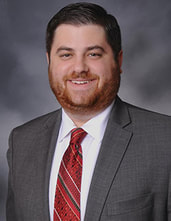
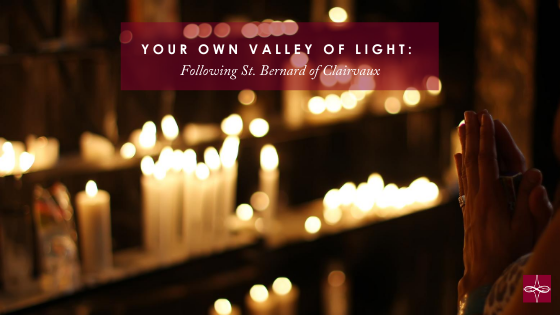

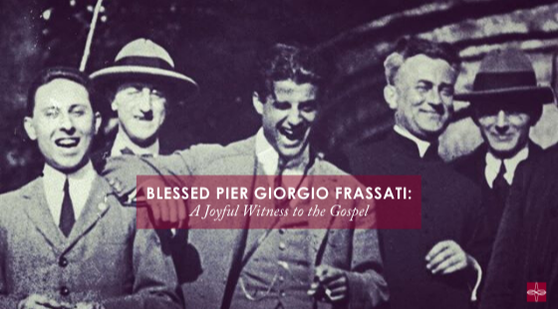

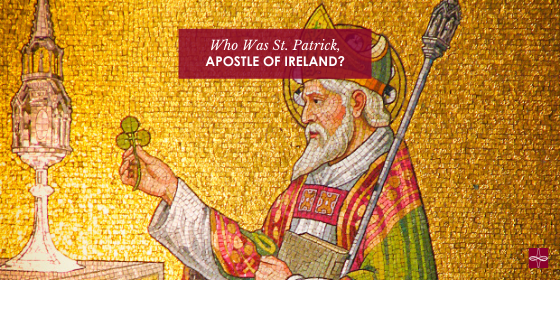

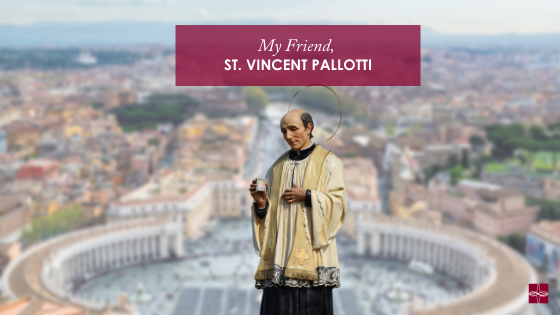
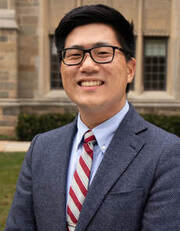
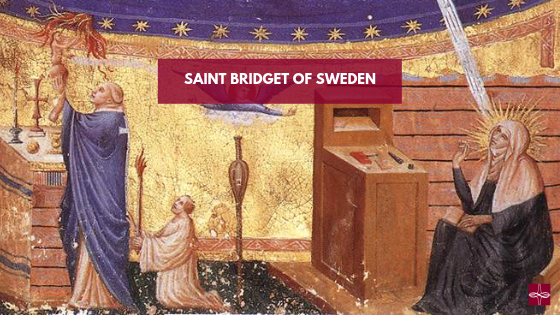

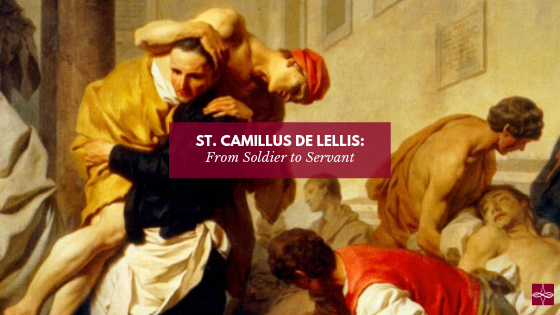

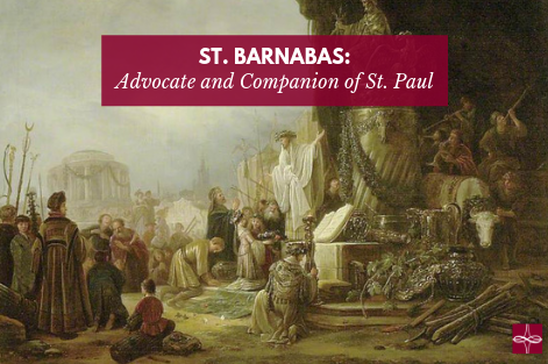

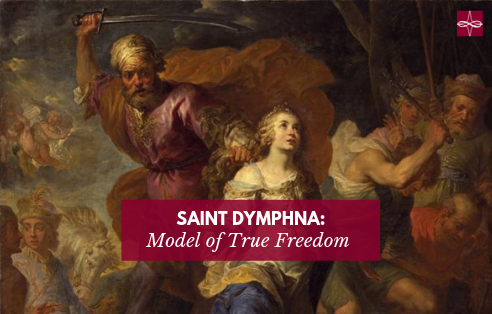

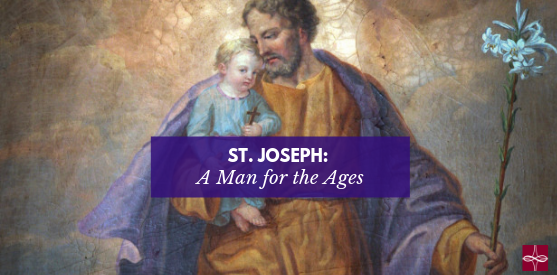

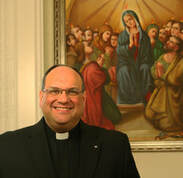
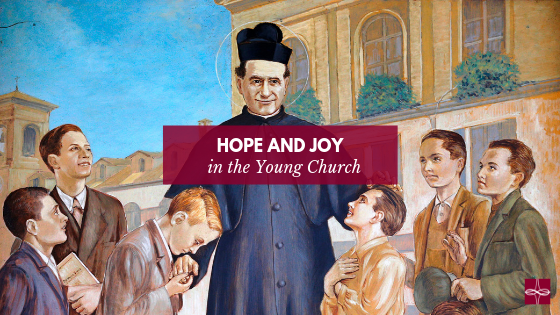

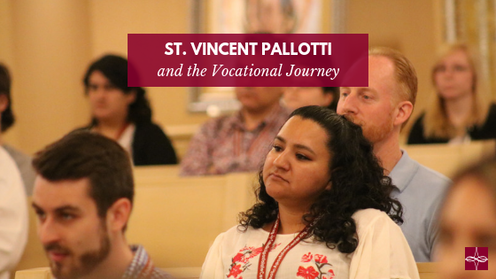

 RSS Feed
RSS Feed